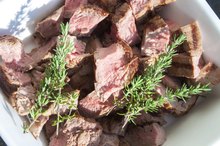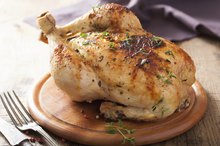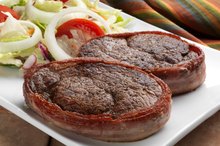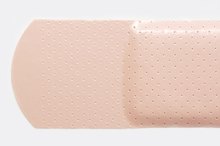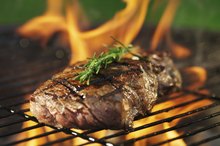What does fact checked mean?
At Healthfully, we strive to deliver objective content that is accurate and up-to-date. Our team periodically reviews articles in order to ensure content quality. The sources cited below consist of evidence from peer-reviewed journals, prominent medical organizations, academic associations, and government data.
The information contained on this site is for informational purposes only, and should not be used as a substitute for the advice of a professional health care provider. Please check with the appropriate physician regarding health questions and concerns. Although we strive to deliver accurate and up-to-date information, no guarantee to that effect is made.
Nutritional Values of Venison vs. Beef
Although beef is still a lot more commonly consumed in the United States than venison, venison is increasing in popularity, in part because of its nutritional profile. Because it is lower in fat than beef, you need to cook venison carefully to avoid drying it out, with many cuts responding best when cooked for longer times at a lower heat while sitting in liquid.
Low-Fat Leader
Although this isn't a particularly high fat cut of beef, the same amount of broiled top round venison steak provides only 129 calories and 1.6 grams of fat, including only 0.9 grams of saturated fat, while still providing 26.8 grams of protein. Some other cuts of beef are much higher in fat, such as:
- prime rib
- which contains 328 calories
- 27.5 grams of fat
- including 11.4 grams of saturated fat
- in each 3-ounce serving
This makes venison a better bet, because consuming too much saturated fat can increase your cholesterol and your risk for heart disease.
Vitamin Victor
Nutritional Information for Ground Elk Meat
Learn More
Both venison and beef provide some of the essential vitamins you need each day. A serving of beef top round steak provides 16 percent of the daily value for riboflavin, 38 percent of the DV for niacin, 38 percent of the DV for vitamin B-6 and 32 percent of the DV for vitamin B-12. Venison provides the same amount of vitamin B-12, but more thiamine and riboflavin, with 14 percent and 25 percent of the DV, respectively. It is slightly lower in niacin and vitamin B-6 than beef, with 36 percent of the DV for niacin and 30 percent of the DV for vitamin B-6. Overall, venison is more vitamin-rich than beef.
- Both venison and beef provide some of the essential vitamins you need each day.
- Venison provides the same amount of vitamin B-12, but more thiamine and riboflavin, with 14 percent and 25 percent of the DV, respectively.
Mineral Medal Winner
Beef tends to be a better source of minerals than venison. Each serving of beef provides 15 percent of the DV for iron, 26 percent of the DV for phosphorus, 11 percent of the DV for potassium and 29 percent of the DV for zinc. Eating a serving of venison provides you with more iron, with 20 percent of the DV, but less of the other minerals with 23 percent of the DV for phosphorus, 9 percent of the DV for potassium and 21 percent of the DV for zinc.
- Beef tends to be a better source of minerals than venison.
- Eating a serving of venison provides you with more iron, with 20 percent of the DV, but less of the other minerals with 23 percent of the DV for phosphorus, 9 percent of the DV for potassium and 21 percent of the DV for zinc.
Potential Pitfall
The Nutritional Values of Freshwater Fish
Learn More
One thing you need to watch out for with venison that isn't an issue with beef is lead fragments in your meat. Unless your venison is farm-raised, which isn't at all common in the United States, some of the lead from the shot that killed the deer will likely still be in the meat when it reaches your plate. A study published in "PLOS ONE" in 2009 found that the meat from 80 percent of professionally butchered deer still contained lead fragments. Hunters and their families often have higher blood levels of lead, increasing their risk for health problems associated with lead poisoning. If you do eat venison, watch carefully for any fragments of metal in your meat so you can avoid consuming it.
- One thing you need to watch out for with venison that isn't an issue with beef is lead fragments in your meat.
Related Articles
References
- Office of Dietary Supplements: Game Meat, Deer, Top Round, Separable Lean Only, 1" Steak, Cooked, Broiled
- Office of Dietary Supplements: Beef, Round, Top Round Steak, Boneless, Separable Lean Only, Trimmed to 0" Fat, All Grades, Cooked, Grilled
- North Dakota State University Extension: Prairie Fare: Take a Walk on the Wild Side of the Menu
- PLOS ONE: Lead Bullet Fragments in Venison from Rifle-Killed Deer: Potential for Human Dietary Exposure
- Office of Dietary Supplements: Beef, Rib, Whole (Ribs 6-12), Separable Lean and Fat, Trimmed to 1/8" Fat, Prime, Cooked, Broiled
Writer Bio
Based in Massachusetts, Jessica Bruso has been writing since 2008. She holds a master of science degree in food policy and applied nutrition and a bachelor of arts degree in international relations, both from Tufts University.
